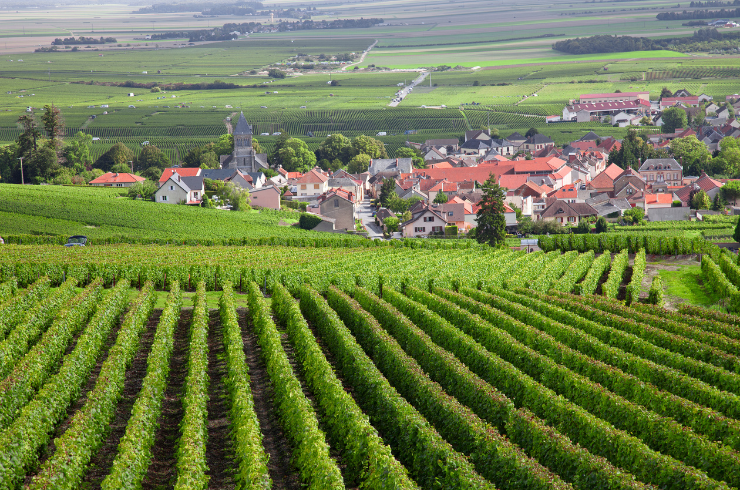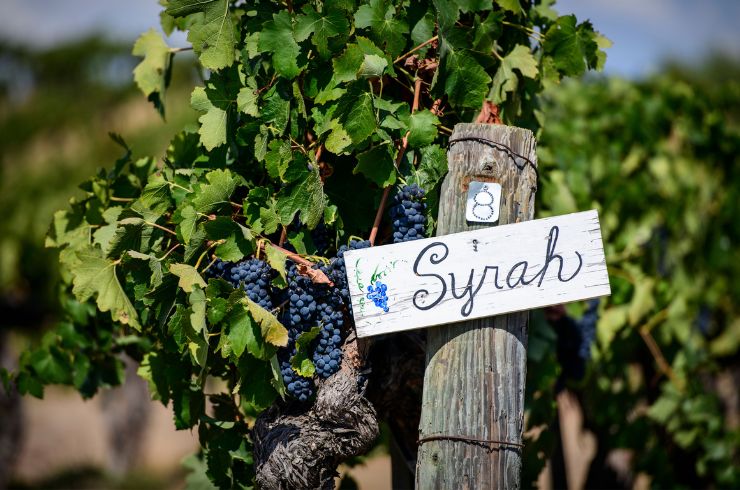The value of the national crush of 1.93 million tonnes is $1.22 billion, the average price per tonne the highest it's been since 2008. After years of grape supply exceeding demand, the two are in balance.
There are two distinct types of Australian wine production: commercial and premium/super-premium. The former is largely sold in supermarket chains, with price discounts and store/floor displays driving sales. This year 1.32 million tonnes of grapes, overwhelmingly grown in the warm inland regions with irrigation from the Murray and Murrumbidgee, were used for such wines at a cost of $354 per tonne. While commercial wine may be of scant interest to those reading these words, it is of fundamental importance to the wine industry as a whole, and to the majority of wine drinkers who enjoy a glass or two a day secure in knowing what they like, and disinterested in how and where it was made.
Premium and super-premium wines are made from grapes grown in the cool/ temperate regions. This year 0.61 million tonnes were harvested – almost half the commercial tonnage – with an average value of $1232 per tonne (almost four times greater). It is this part of the supply chain that is under increasing pressure, largely due to the boom in exports to China.
Hot demand for Australian wine
In 2000, China imported $1.2 million worth of Australian wine. As the ensuing quarters went by and the rate of growth accelerated, commentators said the rate couldn’t be sustained. But it has: in 2017, the average value of exports was $2.02 million per day, a total of $739 million for the year, up 56 per cent on the previous 12 months. The year-on-year figures show Australia’s share of the market increasing from 20 to 24 per cent. France’s share fell from 45 to 41 per cent.
The perpetual question (with its implicit negative answer) is: can this continue? Wine Intelligence, a UK-based market research company, recently released a report on the key trends in the Chinese market. It described an expanding market with rising disposable income and improved logistical distribution in lower-tier cities; increasing purchase of wine for personal consumption by younger, open-minded drinkers; preference for softer, fruitier red wines with less tannins; developing demand for white wine, especially aromatic styles; regional differences reflecting local cuisine; a shift to online purchasing enhanced by access to wine information and lower prices; lower markups in restaurants and ready acceptance of BYO; and increasing acceptance of screwcaps for wines at lower price points, although not for higher priced red wines for gift-giving (it won’t take long).
I would add that inbound Chinese tourism in Australia (and across-the-board investment) is creating unpaid Chinese ambassadors for our wines at mind-bending speed.
China is already by far our largest export market for premium and super-premium wines and will inevitably pull domestic prices higher. The silver lining is that for the average Australian winery there will be more income to plough back into the business, lifting the quality of its wines – and for the owners to draw a salary and take a holiday. For drinkers there will be better quality wine at every price point.
Fresh investment in Australian wine
In addition, the year saw the long-awaited closure of loopholes in the wine equalisation tax. The government expects to save $300 million over the next four years. In return, it has provided $50 million to be administered by Wine Australia including $32.5 million of marketing support, chiefly in the US and Chinese markets. Another $10 million will be spent on state and regional wine tourism initiatives in Australia.
James Halliday’s Top 100 Wines of the Year
And so to this year's Top 100. As a function of price (and hence value for money), the under $20 white wines were predominantly fermented in stainless steel and early bottled, thus reaching the market and payback for the investment more rapidly than chardonnay. Margaret River pressed home its advantage in the sauvignon blanc and semillon blends, leaving only the scraps to fight over.
The pattern with white wines over $20 was very different, with one exception: riesling was well represented in the under $20 bracket with four wines and increased that to five wines in the over $20 bracket. On this comparison alone the long talked-about riesling renaissance might be given credibility, redoubled by the average price per tonne of riesling, the highest of all white varieties. China, previously oblivious to the wonderful compatibility between riesling and most Chinese cuisine, is showing distinct signs of interest. None of the new varieties did well enough to attract a winning score, but fiano is my tip for the first to do so at long odds.
Moving to red wines, pinot noir reflected the strong position it has across all routes to market. The four pinots under $25 pretty well cleaned out the larder at this level, but there were many more wines over $25 that might equally have been selected. As ever, the greatest competition occurred in the over $25 group. At one end came the pinots and two beautiful grenaches, leaving shiraz and cabernet/cabernet blends to contest bragging rights. The ability of shiraz to produce wonderful wines in every combination of soil and temperature would make it easily capable of providing all 80 table wines in the Top 100. Cabernet sauvignon is more choosy: Margaret River and the Yarra Valley provided a glorious line-up
View the Top 100 Wines of 2017
Latest Articles
-
News
The power of perspective: Ryan Ponsford's Entropy
2 Dec 2025 -
Events
Halliday Wine Academy: Wine Immersion Tours
30 Nov 2025 -
Travel
Scenic's Southern France and Bordeaux river cruises are tailor made for wine lovers
30 Nov 2025 -
News
What’s in a name? The etymological origins of popular grapes.
30 Nov 2025



